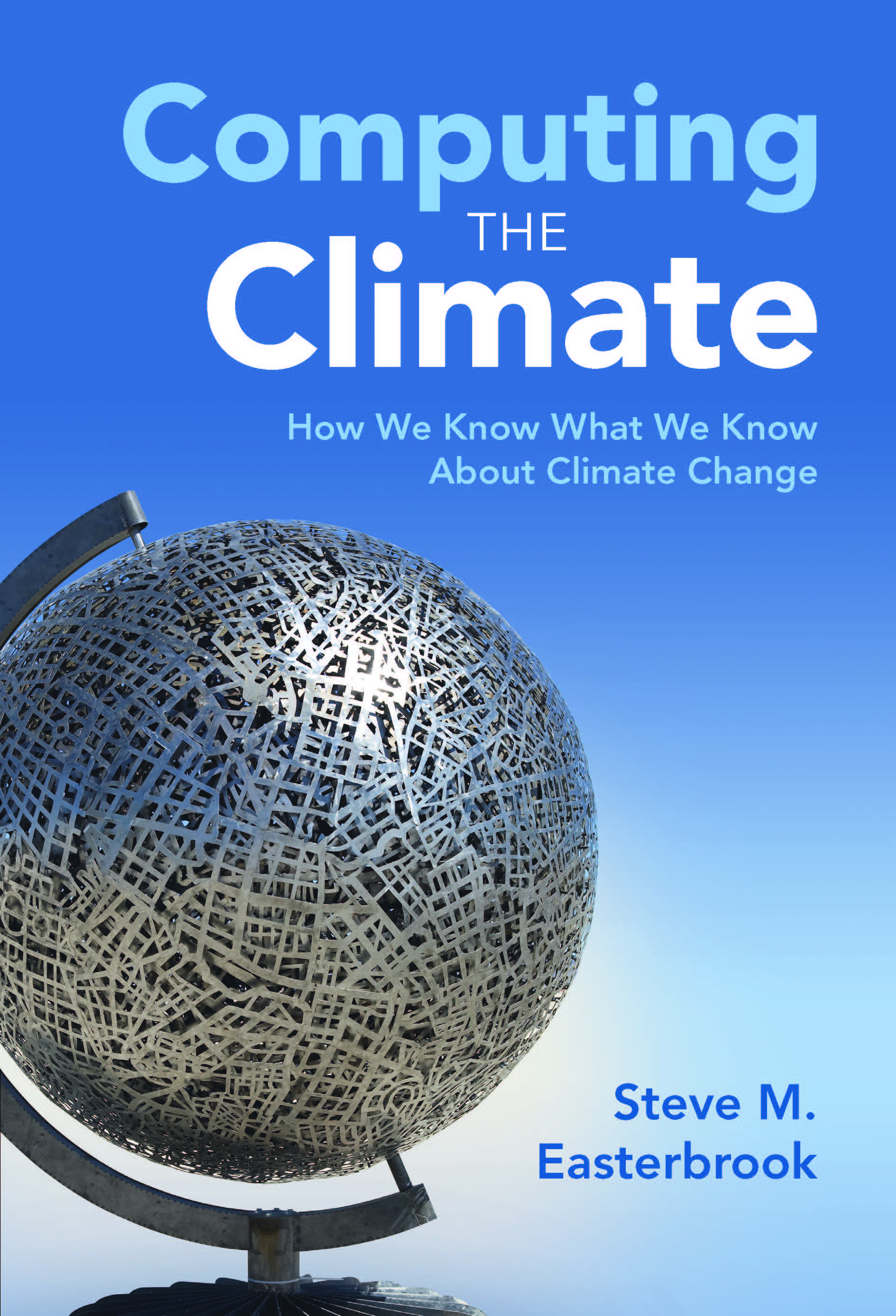
Tue 31 Oct 2023 09:11
Computing the Climate

I'm very glad I did. I am a computer scientist myself, whose career has been dedicated to building and running sometimes complex computer systems to support computer science teaching and research. I recognize in climate modelling a similar task at a much greater scale, working under a much more demanding "task-master": those systems need to be constantly measured against real data from our planet's diverse and highly complex geophysical processes, processes that drive its weather and climate. The amount of computing talent devoted to climate modelling is considerable, much more than I realized, and the work done so far is nothing short of remarkable. In his book, Steve outlines the history of climate modelling from very early work done on paper, to the use of the first electronic computers for weather prediction, to the highly complex and extremely compute-intensive climate models of today. Skillfully avoiding the pitfalls of not enough detail and too much, Steve effectively paints a picture of a very difficult scientific and software engineering task, and the programmers and scientists who rise to the challenge, building models that can simulate the earth's climate so accurately that viable scientific conclusions can be drawn from them with a high degree of confidence.
As a story of scientific discovery and software engineering, this tale of the building of systems that can model the earth's climate would be enough on its own to make a compelling book, and it is, but of course there is more to the story. The stakes around climate are very high today. Carbon dioxide concentrations has been increasing steadily in the earth's atmosphere for well over a century. Carbon dioxide, a pollutant that is produced by the burning of fossil fuels, is easily emitted, but once in the atmosphere, it is very difficult to remove, remaining there for centuries. As a pollutant, it raises the temperature of the planet by causing the earth's atmosphere to retain more of the sun's heat. The rising temperature is changing the climate of the planet in ways that will be soon harmful to millions, and difficult to address. Because the world's climate is changing quickly, we can't "wait and see what happens" because the evidence is ever increasing that what will happen is not going to be something we want: human suffering will be great, and parts of the world will become much less habitable. Our society needs to do something about the changing climate to ward off as much as possible the coming difficulties, but what?
Reassuringly, Steve shows in his book that we have enough information in hand to know what needs to be done. His book outlines clearly the high quality scientific and computational work behind the climate models of today, which produce results that match observed data quite closely. These all paint the same picture: through decisive societal action to reduce carbon dioxide pollution in the atmosphere, and through the active development of suitable carbon capture technologies, our planet can avoid the most seriously damaging implications of climate change. The sooner we act, the less damaging the changes, and the lower the risk of extreme consequences. Yes, it requires doing things differently as a society, which is more difficult than maintaining the status quo. But as Steve's book shows, the reasons for action are sound: the computer models are excellent, the software engineering behind them is superb, and the data supports the conclusions. Failure and catastrophe are not inevitable. Steve's book shows the remarkable work that has already been done to understand the climate. It is true that much more good work will be needed, to act on this understanding. But something can be done. Let us not delay in working together to do what we need to do.
